Discover The Most Beautiful and Stunning Traditional Dress In The World
From the Indian sari to the Vietnamese conical hat, the world is full of different varieties of traditional dress. Some colourful, some immersed in history and specific to the country's culture and others due to circumstance or status - they are almost always eye-catching. Learning about them gains you an insight into the country they're part of, so take a look at these 10 most stunning traditional dress in the world.
1. Quechua clothing
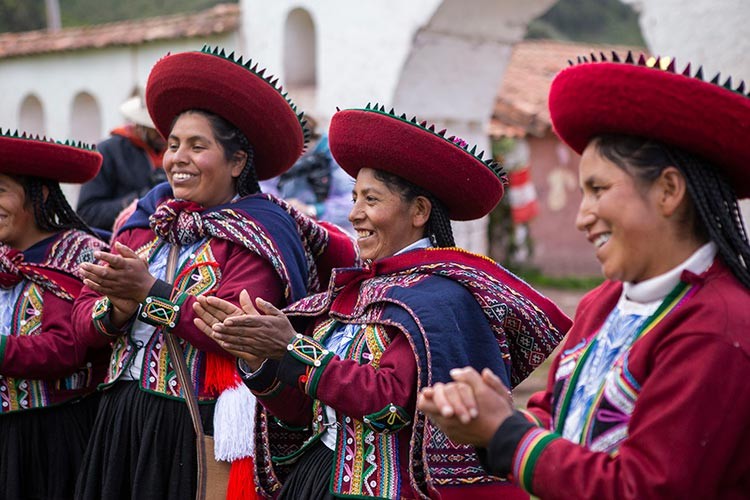 |
| Photo: Kuoda Travel |
The traditional dress worn by Quechua women today is a mixture of styles from Pre-Spanish days and Spanish Colonial peasant dress.
In the Peruvian High Andes, each village has a unique style of clothing that identifies the wearer as belonging to that region. Indigenous women in the Andes dress in layers of bright, colorful traditional Andean clothing, including capes, shawls, embroidered skirts, and vibrantly colored hats. However many women dress in modern clothing these days, and wear their traditional garb for special occasions. Increasingly, young women who live in Cusco and other urban centers choose to wear modern clothing, but may revert to traditional Andean clothing when back in their villages.
Lliclla : Lliclla is a Quechua word for a type of cape worn by Quechua women, also known as a Manta. A lliclla is a square woven cloth that covers the back and shoulders. It is secured at the front using a tupu (straight pin), a sturdy safety pin, or may be worn tied. When folded and pinned about the shoulders it acts as a small heavy shawl, which keeps the women warm in the chilly Andean air.
Chumpi: A Chumpi (a Quechua term meaning belt) is traditionally worn by women to fasten their skirts. Chumpis are also worn by men as a means of supporting the lower back when carrying heavy loads, and to tie their pants. Chumpis are also used to secure swaddled infants. Many weavers make chumpis to sell at market.
Jobona: Jobona is a Quechua word for a traditional wool jacket, worn by women, that is adorned with patterns of colorful buttons, and worn under the Lliclla.
Monteras: Montera is a Quechua word for a traditional hat, which varies in style depending on the region. The sanq'apa is a woven strap decorated with a heavy layer of (predominantly white) beads, that ties the hat under the chin. The number of beads generally reflects the social status of the woman.
Polleras: Polleras are wide skirts, traditionally made from handwoven wool bayeta cloth (but now often machine made and purchased). Women usually wear several of these on top of one another, and on special occasions women may wear up to 10 or more of them at a time!
Hojotas: Hojotas are sandals made from recycled tires. When foreigners first see the Andean people wearing these sandals, they often think that it would be better for them to wear shoes and socks, but the Andean people are very comfortable in these sandals and their feet are well-adapted to the cold conditions.
Men's traditional Andean clothing has been more eroded by Western contact than women's dress, and younger Andean men now mostly wear Western-style clothing, such as sports clothing and baseball caps. Many elderly men wear knee-length, dark handwoven pants. In the Patacancha region, the men wear beige or white bayeta pants. Knee length pants are much more practical for working in the fields; these days it's common to see young men wearing modern sweat pants rolled up to the knees.
2. The Sari, India
 |
| Photo: National Geographic |
The word “sari” means “strip of cloth” in Sanskrit. But for the Indian women—and a few men—who have been wrapping themselves in silk, cotton, or linen for millennia, these swaths of fabric are more than just simple garments. They’re symbols of national pride, ambassadors for traditional (and cutting-edge) design and craftsmanship, and a prime example of the rich differences in India’s 29 states.
“The sari both as symbol and reality has filled the imagination of the subcontinent, with its appeal and its ability to conceal and reveal the personality of the person wearing it,” says Delhi-based textile historian Rta Kapur Chishti, author of Saris of India: Tradition and Beyond and co-founder of Taanbaan, a fabric company devoted to reviving and preserving traditional Indian spinning and weaving methods.
The first mention of saris (alternately spelled sarees) is in the Rig Veda, a Hindu book of hymns dating to 3,000 B.C.; draped garments show up on Indian sculptures from the first through sixth centuries, too. What Chishti calls the “magical unstitched garment” is ideally suited to India’s blazingly hot climate and the modest-dress customs of both Hindu and Muslim communities. Saris also remain traditional for women in other South Asian countries including Pakistan, Bangladesh, and Nepal.
India remains one of the last great handicraft cultures. It’s a powerhouse for dyeing, printing, and silk weaving, all represented in at least one of the estimated 30 regional varieties of saris. In the Ganges riverfront city of Varanasi, weavers bend over old-school wooden looms to make Banarasi silk ones, usually in bright red, trimmed with metallic zari thread, and prized by brides. In tropical Kerala, predominantly white sett mundu saris reflect styles popular before 19th-century industrialization brought the colorful aniline dyes—and Crayola-box brights—spotted around the subcontinent today.
3. Kilts, Scotland
 |
| Photo: CLAN by Scotweb |
Originating in the traditional dress of men and boys in the Scottish Highlands in the 16th century is a skirt-type garment with pleats at the rear.
Since the 19th century, the kilt has become associated with the wider Scottish and Gaelic cultures.
Kilts are often made of a woollen cloth in a tartan pattern.
Usually worn at formal events, competitors also wear this Scottish outfit at the Highland Games. Taking place in an array of islands, towns, villages and cities across the nation, these heavy athletics, dancing, track and field tournaments are held every weekend in the Scottish summer.
The kilt has recently been adapted into an item of contemporary fashion wear, highlighting the versatility of this age-old item of clothing.
Known as the Scottish national dress, kilts are recognised the world over. A symbol of patriotism and national identity, they have deep-seated cultural and historical roots. Across the globe, Scottish people proudly sport kilts as a tribute to their heritage.
Yet, this wasn’t always the case.
For many years, entirely confined to the Highlands, the kilt was widely considered the garb of savages. The Lowlanders, who make up the majority of Scots, regarded this form of apparel as barbarous. They viewed those who wore it with contempt and loathing, labelling them with the derogatory term: ‘redshanks’.
The etymology of the word ‘kilt’ dates back to the Scots word ‘kilt’, which means to tuck clothes around the body. However, the Encyclopædia Britannica says the Scots word is Scandinavian in origin, deriving from the Ancient Norse, ‘kjalta’, meaning pleated.
4. Tracht, Southern Germany and Austria
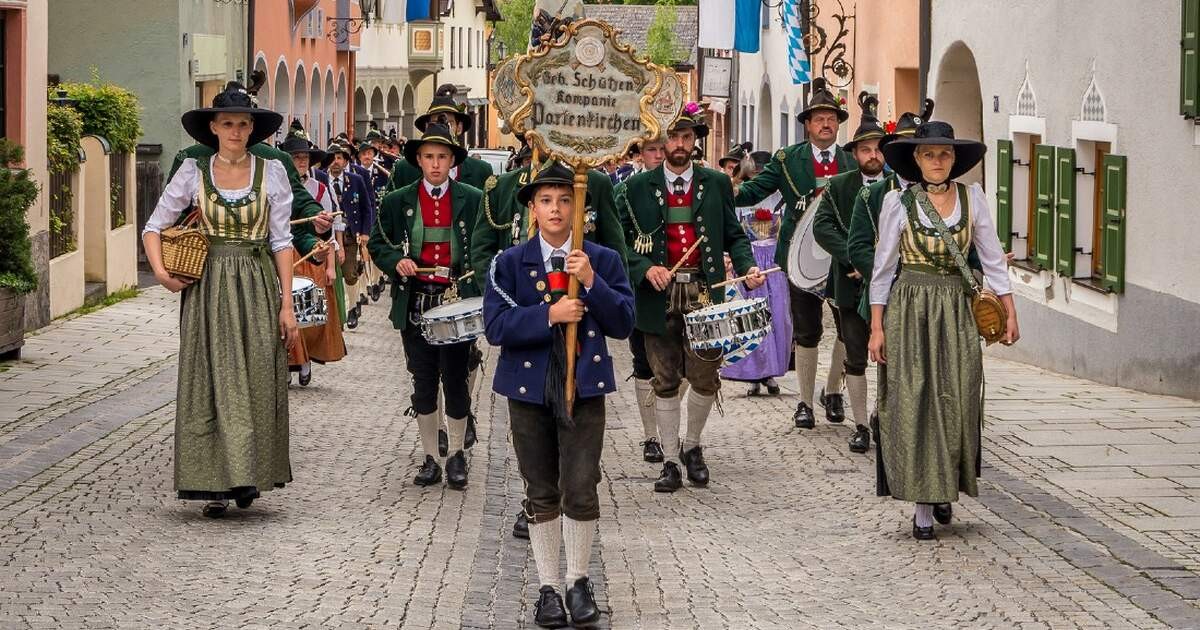 |
| Photo: I Am Expat Germany |
Tracht (German pronunciation: [ˈtʁaxt]) refers to traditional garments in German-speaking countries and regions. Although the word is most often associated with Bavarian, Austrian, South Tyrolian and Trentino garments, including lederhosen and dirndls, many other German-speaking peoples have them, as did the former Danube Swabian populations of Central Europe.
In northern Germany some of the best known examples are the "Friesische Tracht" and the Finkenwerder Tracht. The "Friesische Tracht" is richly decorated with beads and embroidery. The quality of the work was a sign of the riches and social status of the wives wearing it. In former times it was brought into a marriage by the bride as part of her dowry. This costume is occasionally still worn at weddings. The "Finkenwerder Tracht" is the traditional garment of the inhabitants of an island in the Elbe river. It is worn by a local folklore group called Finkwarder Speeldeel.
In the region of Baden in south-western Germany, the areas with strong tracht traditions are found predominantly in the Black Forest (Schwarzwald) and the surrounding region. The Bollenhut, a wide-brimmed hat with red pompoms, has become a symbol of the entire Black Forest, although it is traditionally worn only by unmarried women from the three villages of Kirnbach, Gutach and Reichenbach in the Gutach valley. The Schwarzwälder Trachtenmuseum in Haslach (in the Kinzig valley) displays more than 100 life-size figures in tracht costume, giving an overview of the variety of traditional tracht costumes in the Black Forest. Other displays of tracht from the region are found in the Trachtenmuseum Seebach, as well as many Heimat museums in the region. Local tracht associations in the area encourage the wearing of traditional costume, often with a view to promoting tourism; sometimes these tracht costumes have been recently created.
In Bavaria, the best-known folk costume is undoubtedly the Alpine tracht of Upper Bavaria, consisting of lederhosen for the Buam (man) and the dirndl for the Madl (woman). Today six traditional subtypes of the Alpine tracht are recognised in Bavaria: Miesbacher Tracht, Werdenfelser Tracht, Inntaler Tracht, Chiemgauer Tracht, Berchtesgadener Tracht and Isarwinkler Tracht. The Alpine tracht has also been adopted as traditional dress in regions beyond the Alps, through promotion by tracht associations and migration in search of work; consequently, it is now understood as "the" German folk costume. However, there are still a great many other traditional tracht designs in Bavaria, mostly worn only regionally. These include the Dachauer Tracht, the Priener hat or the more recently arisen Herrschinger Hosenträger (braces / suspenders).
Displaced German peoples like the Sudetendeutsche often used events where they wore Tracht to emphasize their unity.
Costumes worn by professional guilds, habits of religious orders, deaconesses, and the historical garment of some occupational groups (e.g. nurses) are also called "Tracht". While some of them have fallen into disuse, carpenter journeymen can still be seen wearing their traditional garment while traveling throughout Europe.
5. Balinese temple dress, Indonesia
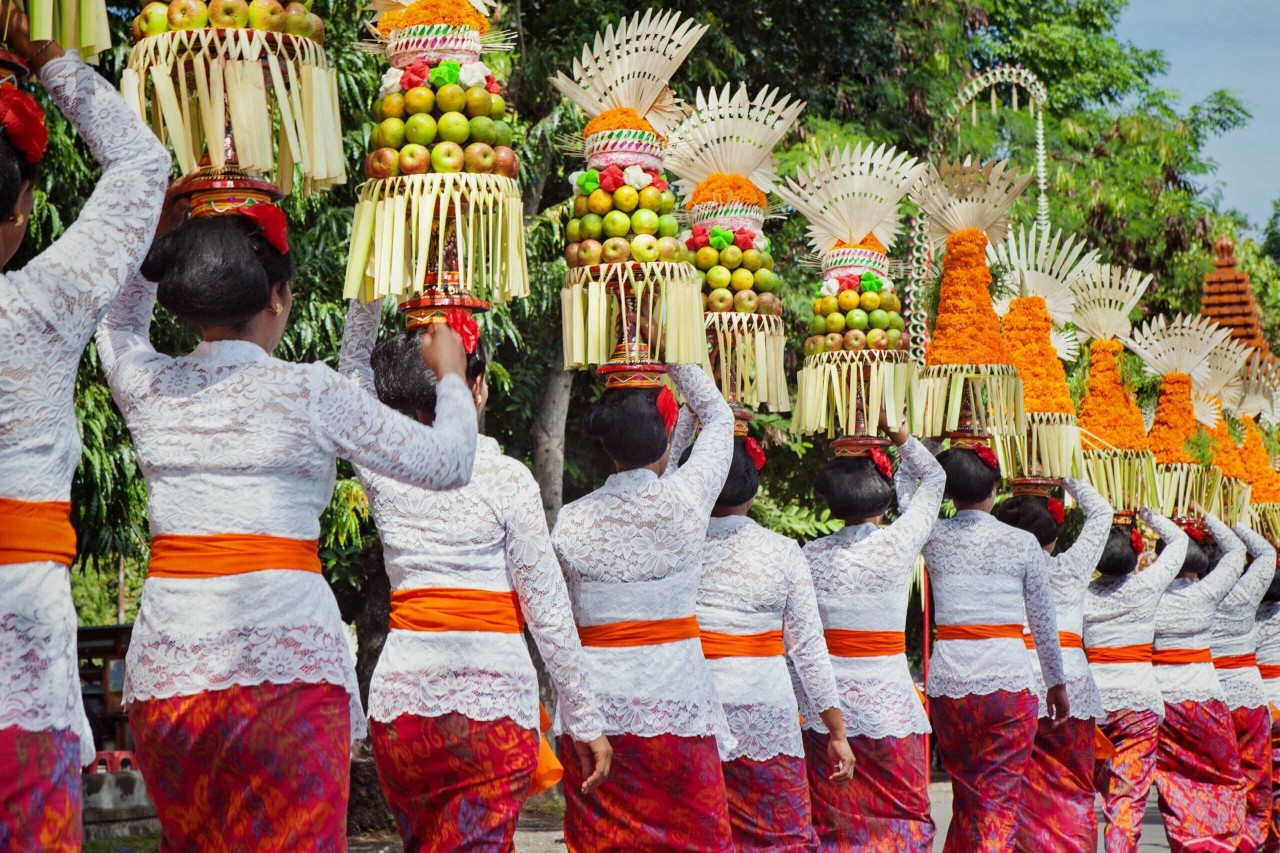 |
| Photo: Shutterstock |
To save the women’s modesty the Kebaya was introduced. The kebaya can be made from any kind of material, but lace is the most popular choice. The kebaya is worn with a corset underneath, especially by older women. White kebayas are more suited for religious ceremonies and events taking place at the banjar (Banjar is a legal community unit that has regional boundaries that are authorized to regulate and manage the interests of the local community. A bit like a village council with a village hall).
In the village or family houses let the women express their colourful sides and wear any coloured or themed kebaya of their choosing. During village or town events, the Balinese ladies would sometimes wear matching kebaya and sarong provided by the banjar.
The kebaya paired with a batik kamben which is very similar to a sarong, a sash tied around their waist and flowers in their hair. The flowers are often frangipani known as Jepun in Bali, which grow in abundance and are used in offerings to the gods.
6. Maasai beadwork, Kenya
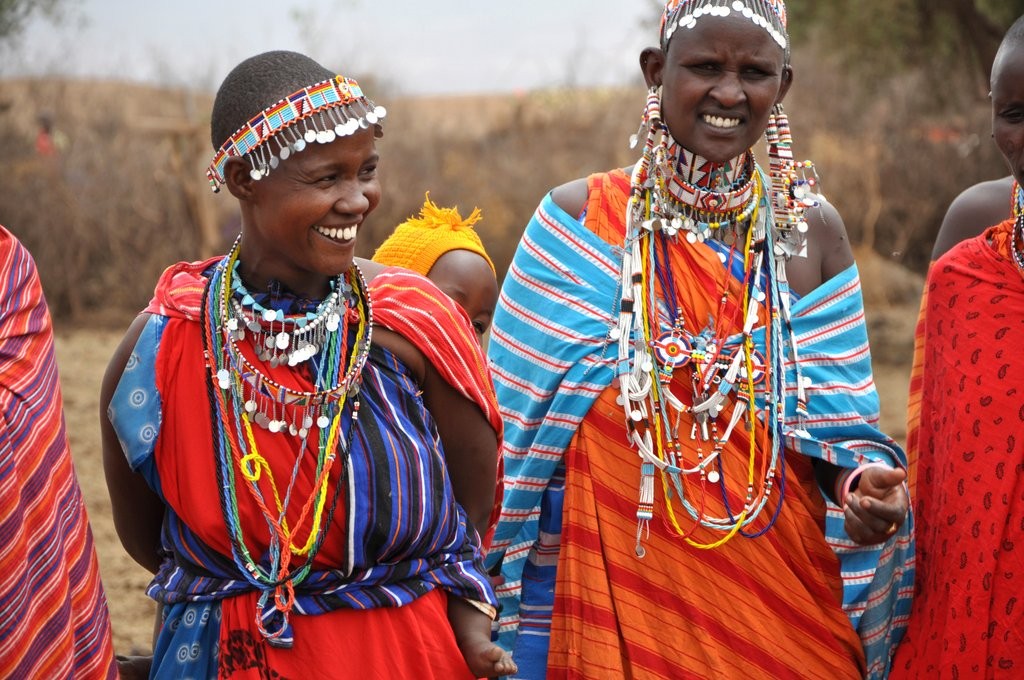 |
| Photo: Shutterstock |
The Maasai beaded jewelry has important and specific cultural significance - the beadwork an individual wears will signify their age and social status. Generally individuals of high social standing will wear more colorful and intricate jewelry.
Beads also serve as an important source of income for the Maasai, as Maasai beadwork has been in existence for hundreds of years. It became significant and known to the rest of the world in the 19th century after trade with other tribes. The tribe used natural resources around them to create their jewelry - everything from clay, wood and bone to copper and brass. In the late 19th century trade with the Europeans made glass beads available across the trade routes in Africa. The Maasai started using these glass beads to make their necklaces, bracelets, and other jewelry. Today glass is still the main material used by the tribe for their beads.
The colors used in the beadwork are selected for their beauty. The colors are also symbolic and have important meanings understood by the tribe.
Often these meanings have an association with cattle, which is the Maasai's main food source and for which they have a deep connection.
7. Kimono, Japan
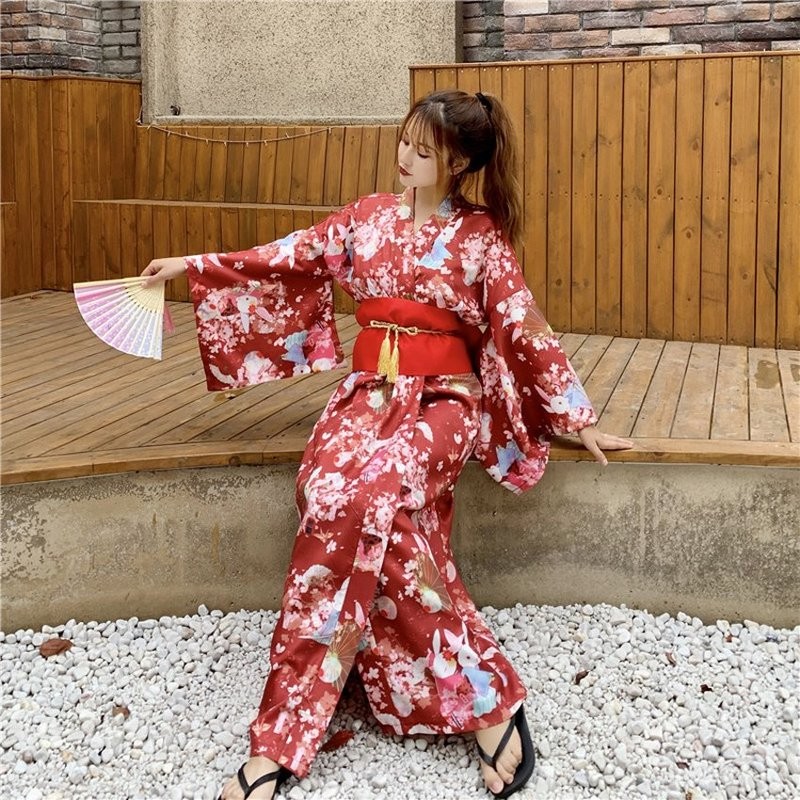 |
| Photo: Pinterest |
The Japanese kimono is one of the world's instantly recognizable traditional garments. The word kimono literally means "clothing", and up until the mid 19th century it was the form of dress worn by everyone in Japan. That began to change slowly with the import of suits dresses and other western fashions during the Meiji Era.
Thanks to the popularity of ukiyo-e woodblock prints in the West at the beginning of the last century, the kimono-clad maiden became one of the quintessential images of Japan. Dressing up in the kimono and other accoutrements of the geisha or maiko is still one of the more popular activities for visiting tourists.
There are different types of kimono for different occasions and seasons, including those worn by men. Other than those worn daily by some older people or performers of traditional arts, kimono are a much less common sight these days but are still widely worn on special occasions such as weddings and graduation ceremonies.
Part of the reason is the cost, as a decent silk kimono will set you back the best part of a million yen. But there is also the question of how to put on the kimono and tie the obi (decorative sash), a complicated procedure that is beyond the ability of many young women. They usually have to ask their mothers to help them or take course at a kimono school.
8. Armenian dress
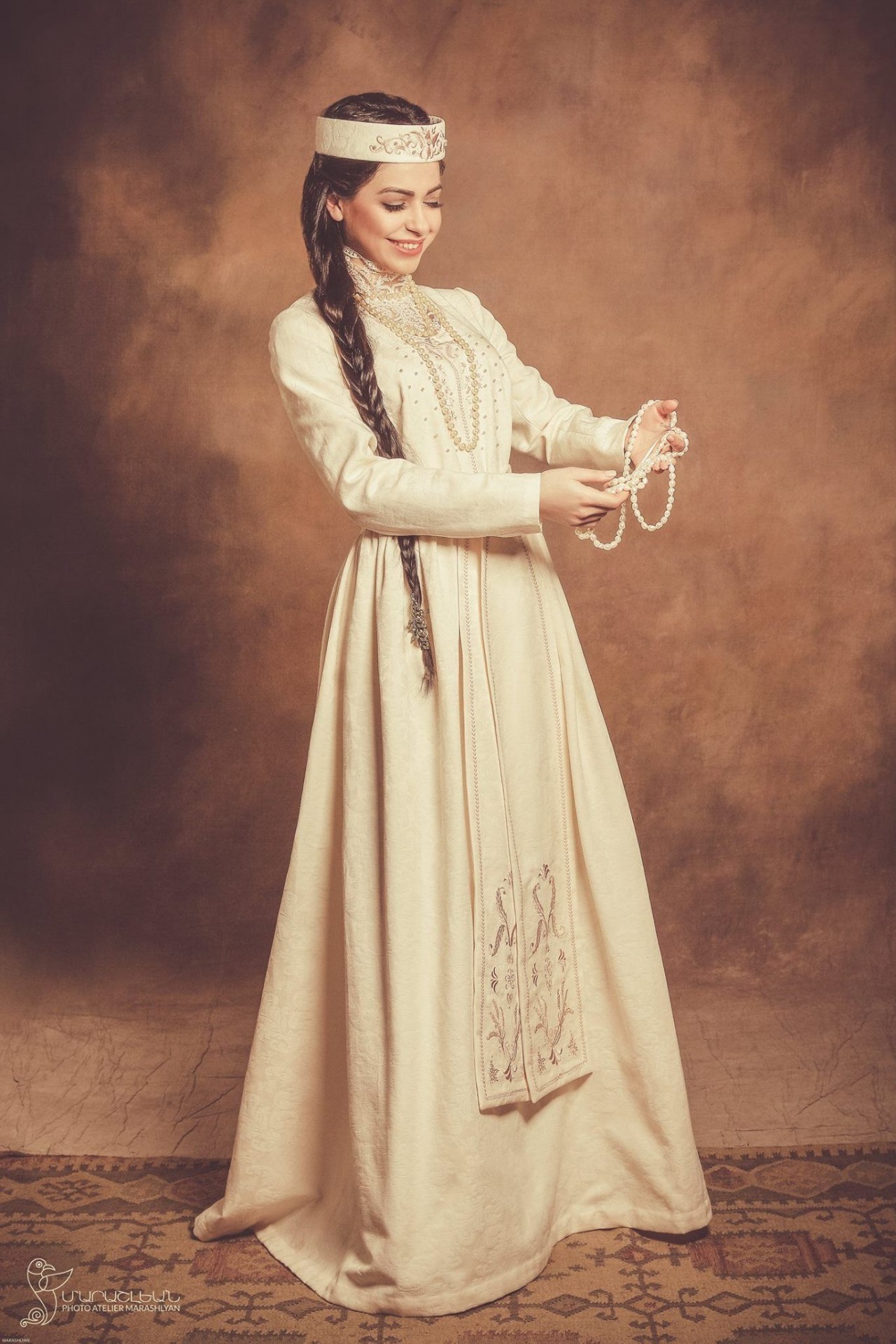 |
| Photo: MedPharmRes |
The traditional dress of Armenia represents a culture that is as diverse as it is rich. These traditional dresses have been influenced by migrants and invaders alike, along with a little inspiration from the Turkish, Persian and Mediterranean civilizations. The traditional dresses for women are loose and were originally made with wool until production of silk began in the country. They are heavily embroidered and worn with ornate jewelry. Flamboyant headdresses, veils and shawls are also commonly worn. The traditional dresses are paired with knitted socks and traditional shoes called drekh, which are boat-shaped. A beautiful costume that really takes your breath away!
The traditional Armenian costume for men consisted of a low-collared silk or cotton shirt with a side clasp which was paired with wide trousers made from dark wool or cotton. Over the shirt was worn a cotton or silk arkhalig, a jacket with a low collar fastened from the waist down with hooks or small buttons. Western Armenians wore an unfastened waistcoat and a waist-length jacket with long sleeves. In lieu of a belt, a long, wide, woven scarf would be wrapped around the waist several times.
Armenian traditional clothes for women in both the eastern and western regions consisted of a long arkhalig dress with a slit on the chest and below the hips. The waist was wrapped in a long, folded silk or woolen scarf. For western Armenian women, an embroidered apron and ornamentation were also indispensable.
 | Mrauk U: The Forgotten Heaven Hidden in Myanmar Mrauk U is a medieval town and archaeological site in Rakhine State, Central Myanmar, which attracts many tourists for its ancient and heavenly beauty. |
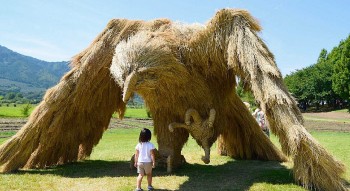 | Beautiful Creatures Made From Straw Displayed in Japan’s Wara Art Festival From the straw left after the harvest, Japanese artists created the giant "wara" creatures and displayed them in the annual Wara Art Festival, which attracts ... |
 | Classic Hong Kong Food Will Make You Wow Hong Kong is famous for food, and when you visit, you better be ready to eat. |
Recommended
 World
World
India strikes back at terrorists with Operation Sindoor
 World
World
India sending Holy Relics of Lord Buddha to Vietnam a special gesture, has generated tremendous spiritual faith: Kiren Rijiju
 World
World
Why the India-US Sonobuoy Co-Production Agreement Matters
 World
World
Vietnam’s 50-year Reunification Celebration Garners Argentine Press’s Attention
 World
World
"Will continue offering our full support to Indian govt": US FBI Director after Pahalgam attack
 World
World
"Great Leader": JD Vance Lauds PM Modi During His India Visit
 World
World
Trump’s Tariff Pause: A Strategic Move from “The Art of the Deal”?
 World
World


